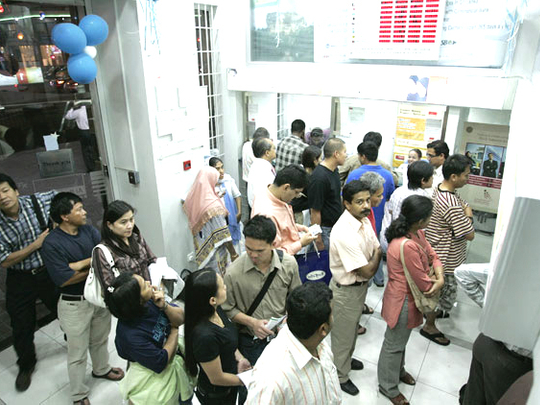
Dubai: The Philippines’ peso has tumbled against the UAE dirham to its lowest level in over a decade, and analysts are predicting that the trend will continue.
The Asian currency devalued to 14.19 against the UAE dirham on Wednesday, February 14, its lowest in 12 years. At the same time, the peso plunged to more than 52 to a US dollar, as the Philippines recorded trade deficits amid rising imports.
“The peso has been on a downward path against the dirham this week,” said one money exchanger in Dubai.
According to Promoth Manghat, CEO of UAE Exchange Group, the peso hit its lowest on Wednesday at 52.111 to a dollar, a trend not seen in the last 12 years.
"The weakness can be attributed to the dollar strengthening and we feel that the trend will prolong for next couple of months, with the peso sliding further, owing to domestic and international factors," Manghat told Gulf News.
The continued fall of the Philippine peso is a boon to expatriates in the UAE. A weak peso means higher remittance power for those remitting in UAE dirhams.
“[This is] good news for Overseas Filipino Workers (OFWs) in the Gulf as each dirham sent home will buy more [Phlippine peso]. We usually see Filipinos remit more money in such situations and gain from the favourable exchange rates by sending more money home,” said Sudesh Giriyan, COO of Xpress Money.
Khoon Goh, head of Asia research for ANZ Banking Group, the strong economic growth in the Philippines is fuelling a surge in imports, resulting in record trade deficits.
“Further peso weakness [is] likely as the current account balance, which was 4 per cent of GDP in surplus a couple of years back, slips further into deficit,” Goh said on Twitter.
Giriyan said the Asian currency has lost some momentum against the US dollar, to which the UAE dirham is pegged.
“The weakening of the Philippine peso could be attributed to the speculation in the market about the US rate hikes which is expected to surge inflation. Additionally, as the US Dollar is gaining strength during the last couple of years, other Asian currencies along with the Indian rupee are in a state of flux - which can also be another reason for this currency weakening.”
#PHP weakens beyond 52. Strong economic growth in the Philippines is fueling a surge in imports, resulting in record trade deficits. Further peso weakness likely as the current account balance, which was 4% of GDP in surplus a couple of years back, slips further into deficit. pic.twitter.com/iyNQk2PMJv
— Khoon Goh (@Khoon_Goh) February 14, 2018
The peso had been fluctuating for quite some time, trading between 11 and 13.5 to every dirham between early 2008 and mid-2016. Since August 23, 2016, however, the overall trend has been quite positive, with the peso constantly hovering above 12.6, based on data posted by currency exchange tracker xe.com.







